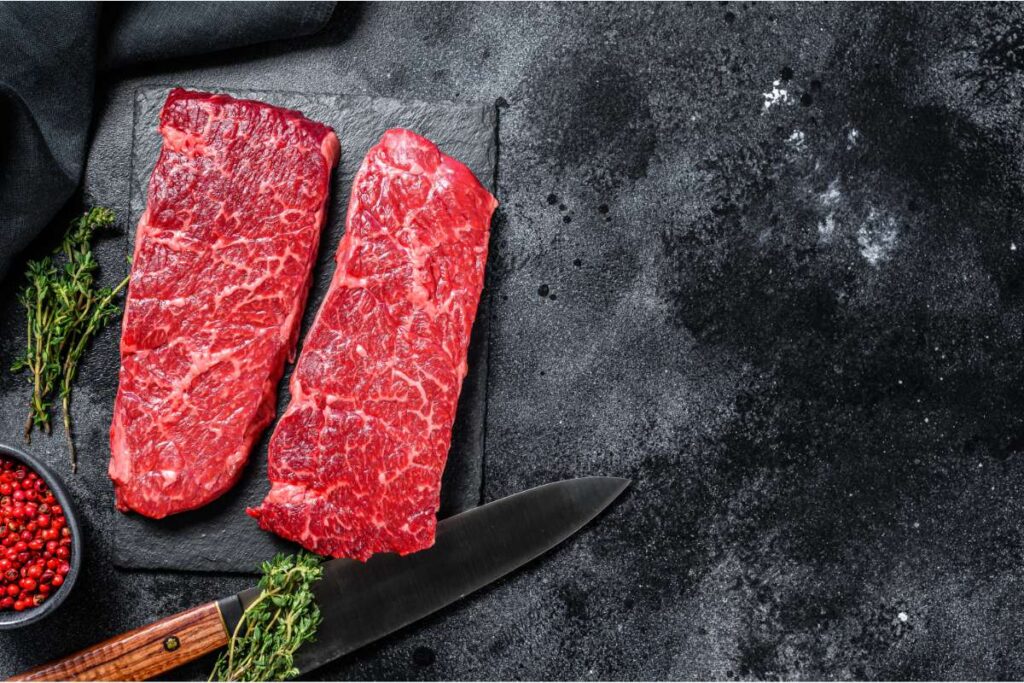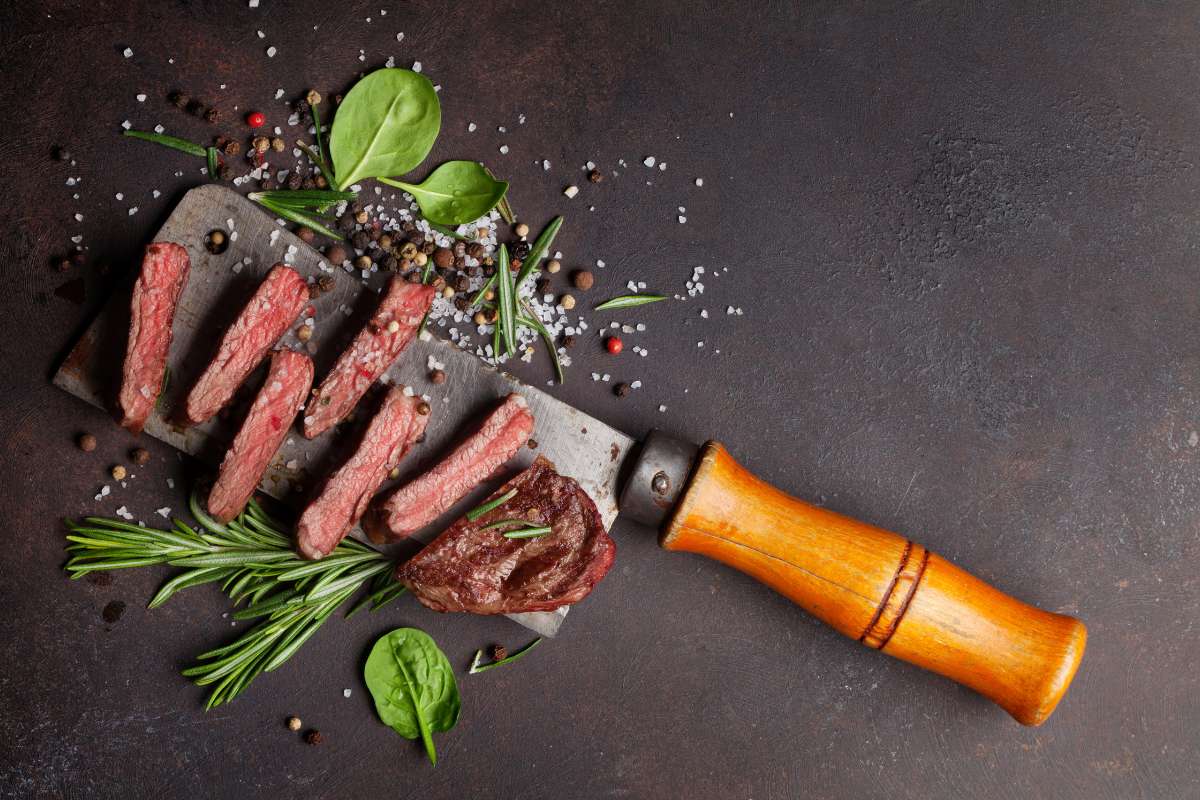Denver cut steak takes us on a journey into the world of the Denver steak — a path that leads us through sizzling grills and into the hearts of meat lovers everywhere. This culinary gem, known for its rich flavor and tender texture, has been carving out its niche not just in Denver but across the globe. As we delve into the essence of the Denver steak, we’ll uncover everything from its humble beginnings to its rise as a culinary sensation. Whether you’re a seasoned chef or a home cook looking to expand your culinary repertoire, this exploration promises enlightenment and delight. So, let’s gear up and embark on this flavorful adventure, discovering the secrets to selecting, preparing, and savoring the Denver steak cut to its fullest. For those interested in broadening their culinary skills further, explore our collection of delightful recipes.
Understanding Denver Steak
Definition and Characteristics
The Denver steak, often celebrated as a hidden treasure among beef cuts, marks its territory as a relatively recent addition to the steak family. Nestled in the heart of the cow’s shoulder, specifically the underutilized chuck underblade, this cut boasts a richness in marbling and a depth of beefy flavor that was once overlooked. Its journey from the shadows to the spotlight is a testament to the evolving appreciation for every part of the animal, recognizing each cut for its unique contributions to the culinary world.
Historical Background
The Denver steak’s name and origin are as intriguing as its taste. This cut’s story is deeply rooted in culinary innovation, emerging from a desire to bring underappreciated parts of the cow into the limelight. The name itself, “Denver,” hints at its American heritage, suggesting a connection to the city known for its deep-seated love for beef. This cut’s rise to fame underscores a broader trend in meat consumption, where exploration and appreciation for lesser-known cuts have led to new culinary discoveries.
Culinary Significance of Denver Steak
Comparison with Other Cuts
Diving into the world of steaks, the Denver steak emerges as a unique contender. It strikes a delightful balance between flavor, tenderness, and affordability, setting it apart from its more renowned relatives like the ribeye and sirloin. The secret to its rich taste lies in the marbling, a characteristic that ensures each bite is infused with succulent flavors, rivaling even the esteemed ribeye. Yet, it’s the tenderness, reminiscent of the luxurious filet mignon, that surprises and delights many. However, what truly distinguishes the Denver steak is its value. Offering a high-quality beef experience without the hefty price tag, it presents itself as a smart choice for those seeking gourmet flavors on a budget.

Best Cooking Methods for Denver Steak
Mastering the Denver steak requires an understanding of the best cooking techniques to bring out its inherent qualities. Here are a few tips to ensure culinary success:
- High Heat is Your Friend: To achieve that perfect sear, cooking on high heat is essential. Whether you’re grilling outdoors or searing in a pan, high temperatures help to caramelize the surface, locking in those juicy flavors.
- Keep an Eye on the Clock: Despite its tenderness, the Denver steak benefits from careful timing. Overcooking can diminish its juiciness, so aim for medium-rare to medium doneness. This ensures the steak remains tender and flavorful.
- Let it Rest: Patience is a virtue, especially when it comes to steak. Allowing the Denver steak to rest after cooking lets the juices redistribute, guaranteeing a moist and tender slice every time.
The culinary potential of the Denver steak is vast, offering a canvas for both traditional and innovative flavors. Whether you prefer the classic simplicity of a grilled steak or the adventurous allure of exotic spices and sauces, this cut adapts beautifully to your culinary desires. It’s not just about following recipes; it’s about embracing creativity and making each dish uniquely yours. The Denver steak, with its perfect blend of tenderness, flavor, and versatility, invites you to explore the endless possibilities it brings to the table.
How to Choose the Best Denver Steak
Selecting Quality Meat
Choosing the right Denver steak begins with a keen eye and a bit of knowledge. When you’re at your local butcher or supermarket, look for steaks with a vibrant, rich red color and ample marbling. This fat woven throughout the meat isn’t just a marker of flavor; it’s a guarantee of tenderness. Feel free to ask your butcher for their recommendations—they can steer you towards the best cuts available. Opt for steaks that are evenly thick to ensure they cook uniformly. Remember, a great steak experience starts with selecting high-quality meat, setting the stage for a truly memorable meal.
Marbling and Texture
The importance of marbling cannot be overstated when selecting your Denver steak. This key feature, the intramuscular fat, is a prime indicator of both flavor and juiciness. The more marbling, the more flavorful and tender the steak will be. However, it’s all about finding the right balance. Too much fat can overwhelm the palate, while too little can lead to a less satisfying experience. Aim for a steak with a good distribution of fat throughout the meat, promising a melt-in-your-mouth texture that’s both rich and delicate.
Part 4: Denver Steak Recipes
Classic Grilled Denver Steak
Grilling is a fantastic method to highlight the natural flavors of the Denver steak. Begin by preheating your grill to a high temperature. Season your steak generously with salt and pepper, and if you’re feeling adventurous, add a rub of your choice to introduce new flavors. Grill the steak for about 5 to 7 minutes on each side for a medium-rare finish. Allow it to rest for a few minutes before slicing against the grain. Serve alongside grilled vegetables for a classic, yet unbeatable, steak dinner that’s sure to impress.
Denver Steak with Chimichurri Sauce
For a vibrant twist, pair your Denver steak with homemade chimichurri sauce. This Argentinian classic, known for its bold flavors of parsley, garlic, vinegar, and olive oil, complements the steak beautifully. Simply blend the sauce ingredients until smooth and spoon it over your grilled or pan-seared Denver steak. The freshness of the chimichurri cuts through the richness of the meat, creating a harmonious balance that’s both refreshing and deeply satisfying.
Cooking with Denver steak opens up a world of culinary possibilities. From the simplicity of a perfectly grilled steak to the complexity of pairing it with international flavors, these recipes are just the beginning. They invite you to explore and experiment with this versatile cut. Whether you’re a seasoned chef or a home cook, the Denver steak is a canvas awaiting your creative touch. So, fire up the grill or heat up the pan, and let the magic of cooking with Denver steak unfold, transforming it into dishes that delight and inspire at every turn.

FAQs
What makes Denver steak unique compared to other cuts?
Denver steak stands out for its exceptional tenderness and deep, beefy flavor, a remarkable feat given its origin in a muscle-heavy section of the cow. Its unique blend of flavor, tenderness, and affordability makes it a favorite among beef enthusiasts. The steak’s marbling not only contributes to its taste but also to its succulence, ensuring a satisfying eating experience that’s hard to match.
How should Denver steak be cooked for optimal tenderness?
The best methods for cooking Denver steak involve high heat to achieve a perfect sear on the outside while keeping the inside juicy and tender. Grilling or pan-searing are ideal, as they enhance the steak’s natural flavors and tenderness. For optimal results, season the steak generously and aim for medium-rare to medium doneness. Always let it rest before serving to allow the juices to redistribute. For more cooking tips, visit Beef It’s What’s For Dinner.
Can Denver steak be used in slow-cooking recipes?
While Denver steak is best enjoyed grilled or seared to highlight its tenderness and flavor, it can also be adapted for slow-cooking recipes. When slow-cooked, the fat marbling renders down, infusing the meat with flavor and ensuring it remains moist and tender. This method is great for dishes that benefit from a longer cooking time to develop depth of flavor.
Conclusion
Our journey through the world of Denver steak reveals a cut of beef that is as versatile as it is delicious. From its rich history and unique characteristics to the myriad ways it can be prepared and enjoyed, Denver steak offers something for every palate. Whether grilled to perfection and served with a simple side or dressed up with vibrant sauces and spices, this steak is sure to impress.
As we’ve explored, selecting the right cut, understanding the importance of marbling, and mastering various cooking techniques are key to unlocking the full potential of Denver steak. With the recipes and tips shared, you’re well-equipped to embark on your own culinary adventures with this exceptional cut.
Remember, the world of Denver steak is vast and full of possibilities. It invites you to experiment, to taste, and to celebrate the joys of cooking and eating well. So, the next time you’re pondering what to cook for dinner, consider the Denver steak—a choice that promises not just a meal, but an experience. For those looking to dive deeper into the culinary delights of Denver steak, explore The Spruce Eats for a selection of high-quality cuts ready to be transformed into your next culinary masterpiece.

